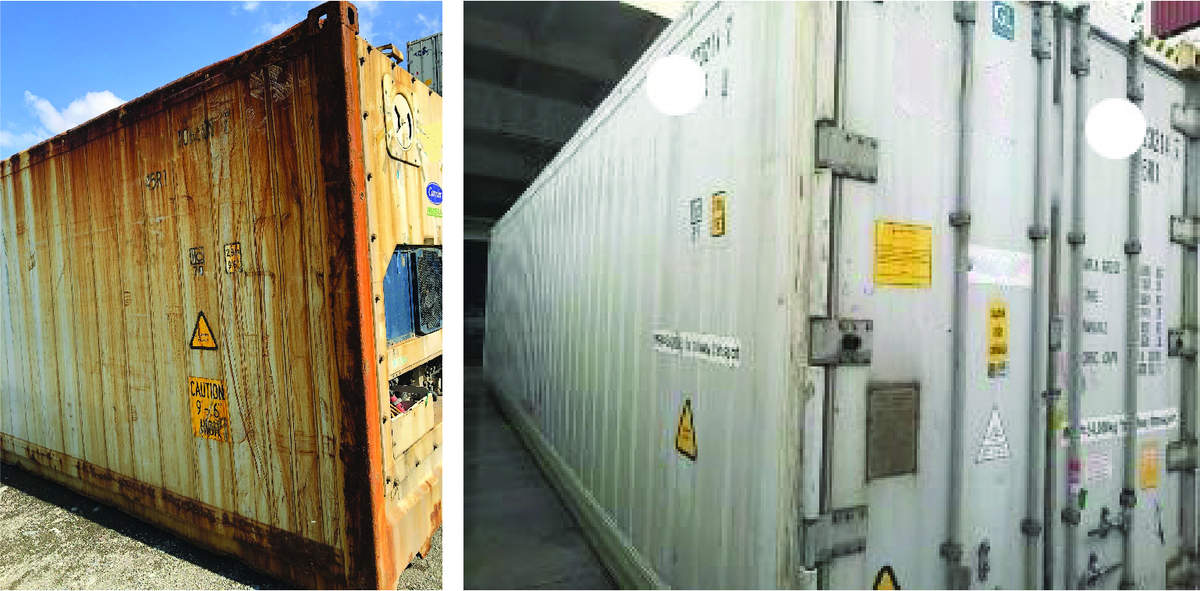
International shippers of fresh fruits, vegetables, seafoods and meats take great pride in the quality and appearance of their products. Similarly, they expect the first thing that arrives at their loading docks by truck, as well as their customers’ location — the refrigerated ocean containers — to look just as fresh.
Food producers undoubtedly become uneasy when loading their products into reefer containers blemished by rusted steel framing, said Steven Blust, president of the Washington-based Institute of International Container Lessors (IICL).
“Top performance, reliability and condition of the refrigerated container have always been hallmarks of refrigerated container services,” Blust said.
Forty-foot reefer containers are also expensive, with new ones costing between $16,500 and $17,500 apiece, whereas new 40-foot dry boxes cost about $3,400 each in today’s market. Lessors of reefer containers expect a 15-year lifecycle for these pricey assets.
Among the key factors for sustaining the appearance and longevity of reefer containers are the protective coatings manufacturers use on the steel frames.
Traditionally, reefer container manufacturers have protected steel frames in highly corrosive marine and rough-and-tumble terminal environments by using hot zinc sprayed coatings, which cost $60 to $80 per 40-footer. However, the galvanization process for coating metals has health and environmental risks if not performed correctly.
Stiffer government regulations have pushed container manufacturers in recent years to significantly invest in new hot zinc spray equipment or abandon the process altogether for cheaper and lighter protective applications using zinc-rich primers, the IICL said.
Last year, the China Container Industry Association warned that some of its members may be forced to abandon hot zinc sprays due to regulatory pressures, which alarmed IICL’s members.
IICL launched a study in December to better understand the wear-and-tear conditions of hot zinc-sprayed containers versus those coated with zinc-rich primers.
For more than a month, a group of container lessors and specially selected independent inspectors, who were led by IICL Director of Technical Services Luiz Gonçalves, carried out random inspections of about 500 reefer boxes in major ports throughout the world, including China’s Qingdao, Shanghai, Dalian and Tianjin; Northern Europe’s Antwerp and Rotterdam; Puerto Limon, Costa Rica; and the U.S. ports of Miami and Los Angeles.
The inspections included 40-foot reefer containers between 1 and 15 years old. Inspectors photographed the containers and filled out standard forms to collect relevant data for the IICL analysis, Gonçalves said.

Note: 1.00 denotes new construction condition (Source: IICL)
“The study, no doubt, reconfirmed what our experience and previous analysis were telling us — that the frame of refrigerated units treated with hot zinc spray had an overall significantly better performance than the ones using zinc-rich primer,” Gonçalves said.
He noted that the difference in condition of reefer containers that used hot zinc spray vs. zinc-rich primer was especially noticeable by the sixth and seventh year in service.
Frame repairs and refurbishing due to premature corrosion are significant expenses to owners and may lead to an early retirement of the containers. In addition, container refurbishers are few and far between worldwide, Gonçalves said.
The IICL said it makes long-term economic and environmental sense for China’s reefer container manufacturers to fully automate the hot zinc spray process, including investing in the necessary air filtration systems, to continue providing these containers with lower maintenance requirements throughout their lifecycle.

